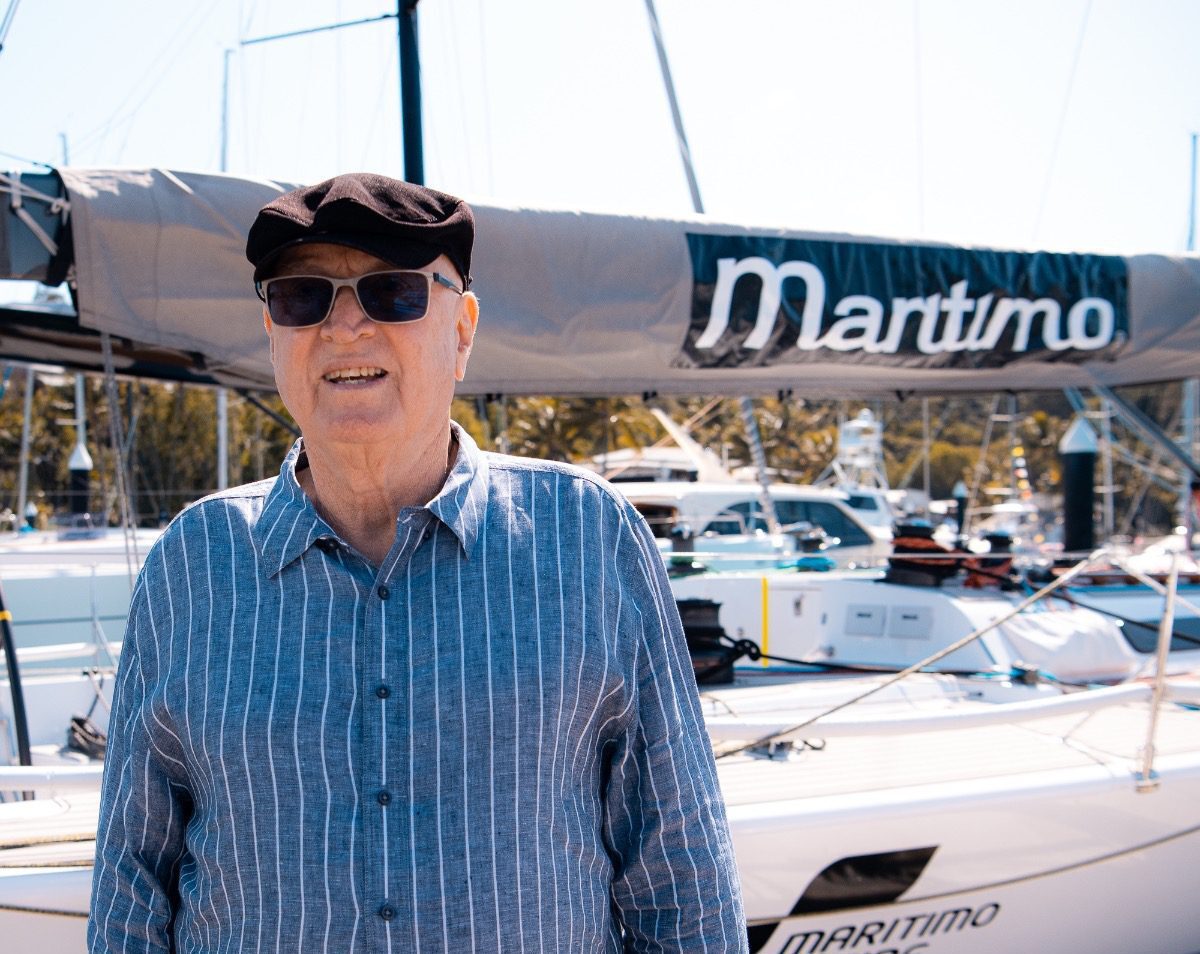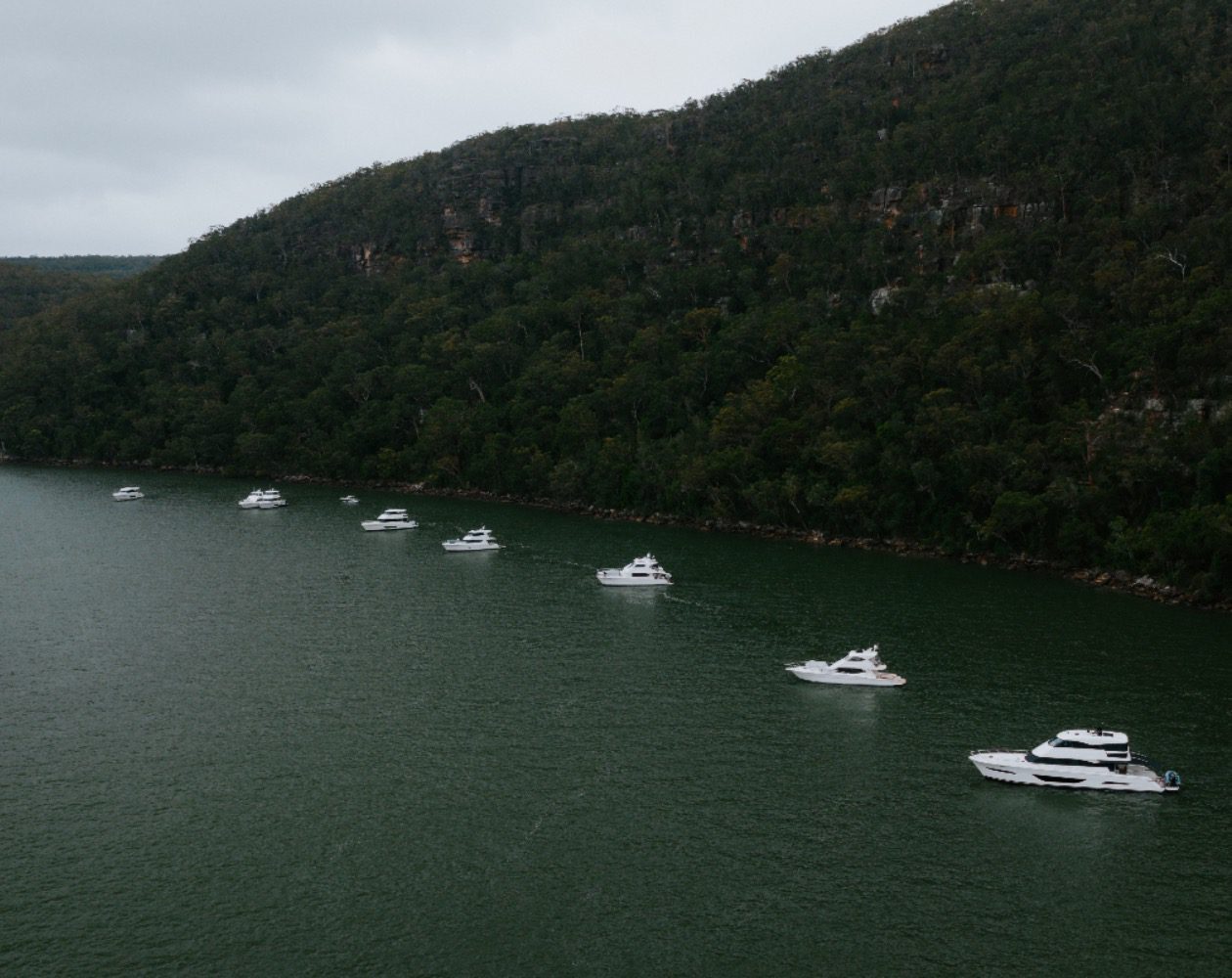Maritimo Skipper Tips – Safe Anchoring and Retrieval.
The highly capable range of Maritimo Luxury Motor Yachts afford their owners and guests adventures to destinations far and wide. Not only are Maritimos highly efficient to travel vast distances comfortably, they also offer all the amenity and luxury on board for long stays in very remote areas, for those that enjoy their own company ‘off the grid’. When there is no marina, dock or fixed mooring at the journey’s end, good planning for local conditions, and a clear understanding and plan for setting the anchor, along with its ultimate retrieval, leads to a less stressful and more enjoyable stay.

Ross ‘Rossco’ Willaton, Senior Marine Engineer for Maritimo, has spent a lifetime around all types of vessels, including a highly successful career and World Championship wins racing Offshore Power Boats, and he shares some of his experience in setting the ‘pick’ securely and safely.
“The important thing when you’re anchoring is, and it’s how a lot of people get in the strife especially in North Queensland where the tides are bigger, is you’ve got to allow for high tide, and then you’ve got to make sure you allow enough swing room,” Willaton offered in opening. “You can anchor near the beach, but if you’re not careful you might find you end up on the beach during the night when the tide goes out. You’ve also got to allow for the wind in addition to the tide, so you definitely have to look at the boat’s swing circle. The deeper the water, the bigger the swing circle when you’re at low tide,” Willaton commented.

“You also need to know what depth you’re going to be left with at low tide. Ideally, it’s great to have ten feet, around three metres under the boat at low tide. At Maritimo we calibrate all our sounders with keel offsets, so when it says it’s two metres deep, you’ve got to allow for the keel offset plus the two metres from the waterline to the winch. So, you’ve got to allow for another four metres to put onto your depth, when you’re working out your ratio for chain length.”
“When it comes to the amount of chain as a ratio, I always use a minimum of seven to one when anchoring overnight. It just depends on the weight of your chain but you want to have at least two metres of chain to lay on the seabed. When you’ve got rope, you actually need to have a lot more, you know, like a ten to one ratio, to make sure that you’ve got the anchor pulling on the right angle,” he added

“Maritimos are all equipped with 60 to 100 metres of chain, depending on the model. I’d recommend that you should also always use a snubber too, with either a chain claw or a chain hook on your setup and have the snubber at least long enough to almost hit the water. This ensures that you get a decent cushion when you’re at anchor overnight. It looks after your equipment, including the winch, as it takes away that sudden jerk of the chain onto the gypsy. It’s better for the equipment and more comfortable for guests on board.”
“Even if I’m just stopping for a short stay – say lunch, I still put five to one of chain out. And if it’s overnight as I said you put the minimum seven to one, and then I always just do the old rule of thumb and press the anchor switch to let out another couple of metres – just for peace of mind,” Willaton added with a grin.

“When you’re setting the anchor, you just want to put the boat into gear and then take it out of gear and let the anchor just tug on the bow of the boat first to set it. Then you can gently put it into gear to just pull it in a little bit more. This will ensure the plough design on the anchor will embed well in the sand.”
“Nowadays with all the technology on board you can also set one, two or three alarms to help monitor things overnight. You can set a GPS alarm; you can set a radar alarm and you can also set a depth alarm – so that if the boat drags or swings, well you’ll know about it. I’m a bit old school and old habits die hard, so I still always stick my head out of a hatch throughout the night, check my surroundings and then check the depth sounder too. Checking the GPS will also tell you a history of boat movement and track where you have been swinging.”
“Another good reason you want the three metres under the boat at low tide is if you are running a generator at night. If it’s in shallow water it may be subjected to sucking up sand or even weed in shallower water. Having three metres of water just gives you a buffer, and cleaner water is potentially better on your gear.”

“Shallow water is where swing angle is so important, because through the night if there’s a wind change or something and the boat swings close to shore, you can be in a lot of strife. So, it’s important to position the vessel as close to the deeper water as possible, in case you need to get out of there, and work out your swing angle at low tide where you’re going to be. If you do need to move out of the shallower water then go easy with the throttles to avoid blowing up sand and sucking it up into your sea strainers.”
“When you’re ready to weigh anchor, I always suggest you should have someone on the bow using the foot switches. Having someone forward operating the anchor chain take up means they can point to where the chain’s rising from and they can measure it, as they’re looking directly at the chain. Some vessels have a camera up the bow, but if you don’t have a camera, I always send someone up forward. The process is that the skipper can slowly move up under power to the anchor and the person forward can point in the right direction to the chain, to keep it square to the roller.”
“Of course, if you have a wireless remote docking controller, you can do it all yourself from right up where the action is.”
“It’s important to remember the winch is there to lift the weight of the chain, not to pull the boat to the anchor. It’s all about common sense and looking after your gear for its longevity,” said Willaton in closing.

A Handy Guide to Anchoring Successfully:
Anchoring – Plan Ahead
Assess wind, tide, and conditions before dropping anchor.
Take your time and move slowly through the process.
Choosing a Spot
Pick a location min 3 metres deep at low tide.
Motor slowly into the wind or tide toward your chosen spot.
Setting the Anchor
Let the chain free-fall over the bow.
Apply a little pressure from the screws to ‘bed it in’
Ensure the anchor and 2–3 metres of chain settle on the bottom.
Chain Length
Use a minimum 7:1 ratio of chain when anchoring overnight.
Include your deck height to winch (about 3.5 metres) in chain length calculations.
Anchor Retrieval – Winching In
Keep boat and cable aligned straight.
Motor slowly forward while winching in the chain.
Surface Break
Bow person signals when anchor is nearly at the surface.
Slow down winch speed to prevent damage to the bow or gelcoat, and do not be travelling ahead until it is stowed.
If the Anchor is Stuck – Don’t Panic!
Overrun the cable: let it hang back at an angle.
Apply gentle forward power to pull the anchor out backwards and free it from snags.
Communication Tips – Hand Signals
Establish a simple, clear set of hand signals between helm and bow crew.
Ensures smooth coordination and safety during anchoring and retrieval.





